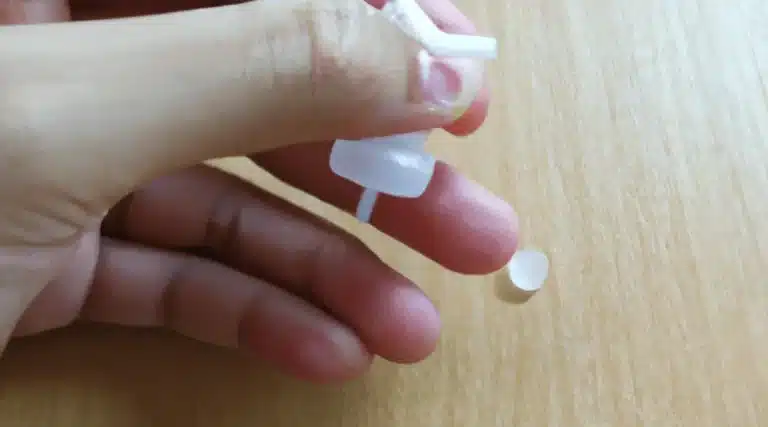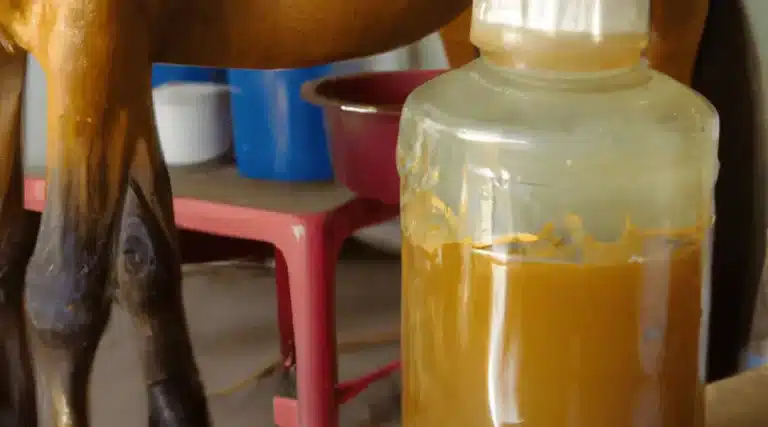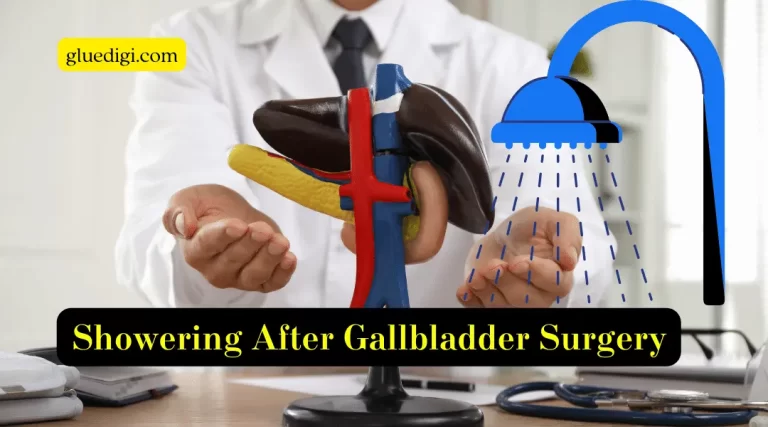Plastic is one of the most commonly used materials in everyday life. From packaging to household items, plastic is an essential part of our modern world.
However, when plastic objects break or become damaged, it can be challenging to repair them without causing further damage. Gluing plastic together may seem like a simple task, but it requires careful consideration of the type of plastic being worked with and the appropriate adhesive to use.
To ensure a successful repair, it is essential to understand the properties and characteristics of the plastic being repaired. Different types of plastics require different adhesives as some adhesives do not bond well with certain plastics.
Additionally, factors such as temperature and humidity can also affect how well an adhesive will bond with a particular type of plastic. Therefore, choosing the right adhesive for your project is crucial for achieving a strong and durable bond that will withstand wear and tear over time.
Key Takeaways
- Proper identification of the type of plastic being used is crucial for selecting the appropriate adhesive and bonding method.
- Adequate surface preparation techniques and following adhesive label instructions are essential to achieve a strong and durable bond.
- Applying too much adhesive can weaken the bond strength and cause an uneven surface and air pockets.
- Testing the bond strength before using the repaired object is crucial to avoid potential hazards or accidents.
Understand the Type of Plastic You Are Working With
An essential step in the process of bonding plastic is to accurately identify the type of plastic being utilized, as this information will determine the appropriate adhesive and method for successful bonding.
Identifying plastics can be challenging as there are many different types with varying properties.
However, it is crucial to know which type you are dealing with, as some adhesives may not work well or at all on certain plastics.
Additionally, adhesive compatibility also plays a significant role in determining the success of bonding plastic.
Some adhesives may not bond properly if they are not compatible with the plastic they are being used on.
Therefore, it is important to understand both the type of plastic and adhesive compatibility before attempting to bond plastic together.
By doing so, you increase your chances of achieving a strong and long-lasting bond between two pieces of plastic without any issues.
Choosing the right adhesive for your specific needs comes next in this process.
Choose the Right Adhesive
Selecting an appropriate adhesive is crucial for effectively bonding plastic materials. There are several types of adhesives available in the market, each with its unique properties and characteristics. It is essential to choose the right adhesive that matches the type of plastic you are working on. A common mistake people make while selecting an adhesive is assuming that all plastics can be bonded with any glue. This approach can lead to weak bonds, which eventually fail over time. To help you choose the right adhesive, refer to this table below that lists some common types of plastics and their compatible adhesives.
| Type of Plastic | Compatible Adhesive |
|---|---|
| Polyethylene (PE) | Cyanoacrylate (super glue), Epoxy, Polyolefin |
| Polypropylene (PP) | Epoxy, Polyolefin |
| Polystyrene (PS) | Cyanoacrylate (super glue), Styrene-based Solvent Cement |
| Acrylic | Methacrylate Adhesive |
| PVC | PVC Cement |
If you cannot find a suitable adhesive for your plastic material or if you want alternative options, consider using mechanical fasteners such as screws or bolts to create a more robust bond between two surfaces. However, before applying any adhesive or fastener, it is crucial to prepare the surface by cleaning it thoroughly and removing any dirt or grease present on it. This step will ensure maximum adhesion between the plastic surfaces and prevent failure due to weak bonds caused by poor surface preparation.
Prepare the Surface
Preparing the surface for gluing is a crucial step in achieving a strong and long-lasting bond.
This involves cleaning the plastic surface thoroughly to remove any dirt, oil, or residue that may interfere with adhesion.
Additionally, scuffing the surface using sandpaper or another abrasive material can enhance the adhesive’s grip by creating microscopic grooves that allow it to penetrate more deeply into the plastic.
Finally, if necessary, applying a primer can further improve adhesion by promoting chemical bonding between the adhesive and plastic surface.
By following these steps carefully, one can ensure optimal performance of their adhesive when bonding plastics together.
Clean the Plastic Surface
Ensuring the plastic surface is free of any dirt, dust or debris prior to gluing can significantly improve the strength and durability of the bond. This step is crucial for achieving a successful outcome when attempting to glue plastic together.
Common mistakes in surface preparation include using solvents that may be too harsh on the plastic and not allowing enough time for cleaning agents to evaporate before applying adhesive. To avoid these mistakes, follow these three simple steps:
1) Use a mild detergent and water solution to clean the surface thoroughly;
2) Dry the area with a lint-free cloth or allow it to air dry completely;
3) Use rubbing alcohol or acetone to remove any remaining residue.
By following these steps, you will ensure that your plastic surfaces are clean and ready for bonding. Scuffing the surface for better adhesion can be done after this step without compromising its cleanliness.
Scuff the Surface for Better Adhesion
Scuffing the surface of the plastic can create tiny scratches, which provide a rougher texture and increase the surface area for better adhesion. This process enhances the bonding ability of glue or adhesive to stick to plastic surfaces. Scuffing also removes any oily residue that may impede bonding.
There are several methods of scuffing plastic materials, including sandpaper, steel wool, or abrasive pads. The benefits of scuffing plastic surfaces before gluing include improved bond strength, increased durability and longevity, and better resistance to environmental factors such as moisture or heat. However, it is important to note that over-scuffing can damage the material and reduce its structural integrity.
Therefore, it is essential to follow recommended guidelines for scuffing techniques based on the type of plastic being glued and the adhesive being used. Moving forward with applying primer if necessary will further enhance adhesion between plastics.
Apply Primer if Necessary
Applying primer to the plastic surface can significantly improve adhesion between the plastic and adhesive. Primer acts as a bridge between the plastic surface and the adhesive, creating a stronger bond.
There are several benefits of using primer, including increasing adhesion strength, reducing the risk of failure, and preventing discoloration or damage to the plastic.
However, there are common mistakes when applying primer that can lead to poor adhesion, such as not allowing sufficient drying time or using too much or too little primer. To avoid these issues, it is important to follow manufacturer instructions and use appropriate tools for application.
Once you have applied primer correctly, you can move on to applying your chosen adhesive with confidence in its strong bond with the plastic surface.
Apply the Adhesive
When applying adhesive to plastic, it is crucial to follow the instructions on the label of the product. This ensures that the adhesive is applied correctly and maximizes its effectiveness.
Additionally, it is important to apply the adhesive in a thin layer, as this allows for better bonding between the surfaces.
Finally, after applying the adhesive, it is essential to press the plastic together firmly to ensure a strong and secure bond.
By following these key points when applying adhesive to plastic surfaces, you can create durable and long-lasting bonds.
Follow the Instructions on the Adhesive Label
To ensure optimal results, it is important to carefully read and follow the instructions provided on the adhesive label when attempting to glue plastic together.
When reading the adhesive label, there are several tips that can help you understand how to properly use the adhesive. First, make sure you understand any safety precautions or warnings listed on the label.
Second, pay attention to recommended drying times as these will vary depending on the type of adhesive used. Finally, be aware of any specific application instructions such as temperature ranges or surface preparation requirements.
Following these guidelines can help ensure a successful bond between plastic pieces. Additionally, adhering to recommended drying times is crucial for achieving maximum strength in your bond.
Once you have thoroughly read and understood the instructions provided by the adhesive manufacturer, you can move onto applying the adhesive in a thin layer for best results.
Apply the Adhesive in a Thin Layer
Achieving a successful bond between plastic pieces requires the application of adhesive in a thin layer, which can be accomplished by following specific guidelines provided by the manufacturer.
Applying too much adhesive can lead to an uneven surface, air pockets and even weaken the bond strength. A thin layer ensures that both surfaces are evenly coated, allowing for maximum contact and adhesion.
Benefits of a thin layer include reduced risk of excess adhesive oozing out when pressure is applied, minimizing clean-up time, and preventing any possible damage or distortion to the plastic material due to chemical reactions from excessive bonding agents.
Common mistakes in thin layer application include not stirring the adhesive thoroughly, using expired products or applying too little or too much adhesive. It is important to follow the manufacturer’s instructions carefully to ensure optimal results.
By achieving a smooth and even application of adhesive in a thin layer, one can then proceed with pressing the plastic together firmly for maximum bonding strength.
Press the Plastic Together Firmly
Applying adhesive in a thin layer is just the first step towards effectively gluing plastics together. The next crucial step is to press the plastic pieces together firmly. This is where the importance of pressure comes into play.
In order to ensure that the adhesive bonds strongly, it’s essential to apply sufficient pressure during bonding. Here are some techniques for applying pressure:
1) Use clamps or weights to hold the plastic pieces in place while the adhesive cures;
2) Apply manual force by pressing down on top of the plastic pieces with your hands; and
3) Use a roller tool specifically designed for applying pressure during bonding.
By using these techniques, you can be assured that your glued plastic will have a strong and lasting bond.
Moving on to subsequent section about allowing time for the adhesive to cure, it’s important to remember that patience is key when working with adhesives.
Allow Time for the Adhesive to Cure
To ensure a strong and durable bond, it is crucial to allow sufficient time for the adhesive to cure.
It is recommended to wait for the specified drying time before handling or using the repaired object.
Disturbing the bonded plastic during the curing process may weaken or break the bond, negatively affecting its strength.
Before relying on the repaired object, testing its bond strength can provide assurance that it has fully cured and will withstand normal use.
Wait for the Recommended Drying Time
After applying the adhesive to the plastic surfaces, it is important to allow sufficient time for the recommended drying period before handling or using the glued parts. The importance of patience cannot be overstated as disturbing the adhesive during curing can weaken its bond strength. Common drying times vary depending on the type of adhesive used and environmental conditions such as temperature and humidity. To ensure optimal bonding strength, it is essential to follow the manufacturer’s instructions regarding drying time. A table highlighting recommended drying times for various types of adhesives and plastics can be helpful in determining appropriate waiting periods. Waiting for an adequate amount of time before handling glued parts not only ensures a stronger bond but also reduces safety hazards associated with dislodging or damaging glued components prematurely. It is critical to avoid disturbing bonded plastic during curing by refraining from moving or manipulating it until after the recommended drying period has elapsed, which will help ensure safe operation and longevity of repaired items.
Avoid Disturbing the Bonded Plastic During the Curing Process
Waiting for the recommended drying time is crucial when gluing plastic together, but it’s equally important to avoid disturbing the bonded plastic during the curing process. Patience is key here, as any movement or stress on the bond can weaken it and compromise its strength.
To help you avoid accidental disturbance, here are some useful tips:
1) Avoid touching or moving the glued parts until they’re fully cured;
2) Use clamps or other tools to hold them in place if necessary;
3) Keep children and pets away from the glued area to prevent any unintentional contact.
By following these guidelines, you’ll ensure that your bond has enough time to form properly and reach its full potential strength. Once you’ve allowed enough time for curing, it’s important to test the bond strength before using the repaired object.
Test the Bond Strength before Using the Repaired Object
Testing the strength of the bond is crucial before using the repaired object to ensure that it can withstand any stress or pressure it may encounter in its intended use. Several factors can affect the bond strength, such as the type of plastic, adhesive used, and curing time. To determine if the bond is strong enough, a simple test can be performed. The table below shows different methods for testing bond strength and their corresponding advantages and disadvantages. It is essential to test the bonded plastic thoroughly to avoid any potential hazards or accidents that may arise from a weak bond. By doing so, users can have peace of mind knowing that the repaired object will perform as expected without compromising safety.
| Test Method | Advantages | Disadvantages |
|---|---|---|
| Lap Shear Test | Easy to perform; Provides quantitative results | Requires specialized equipment |
| Tensile Test | Provides quantitative results; Can simulate real-world stresses | Requires specialized equipment; Destructive test |
| Peel Test | Easy to perform on curved surfaces; Non-destructive test | Results may vary based on surface preparation |
| Impact Resistance Test | Simulates real-world impacts; Non-destructive test | Results may vary based on impact location |
(Source: ASTM D1002 – Standard Test Method for Apparent Shear Strength of Single-Lap-Joint Adhesively Bonded Metal Specimens by Tension Loading)
Conclusion
In conclusion, gluing plastic together is a common practice in various industries and household repairs. To achieve a successful bond, it is important to understand the type of plastic being used and select the appropriate adhesive accordingly. Failure to do so may result in weak or ineffective bonds that could compromise the integrity of the object or surface being repaired.
Moreover, preparing the surface by cleaning and drying it thoroughly before applying the adhesive is crucial for optimal adhesion. Once applied, allowing ample time for curing ensures maximum strength of the bond.
By following these steps and using proper techniques, one can effectively glue plastic together with confidence and reliability.



